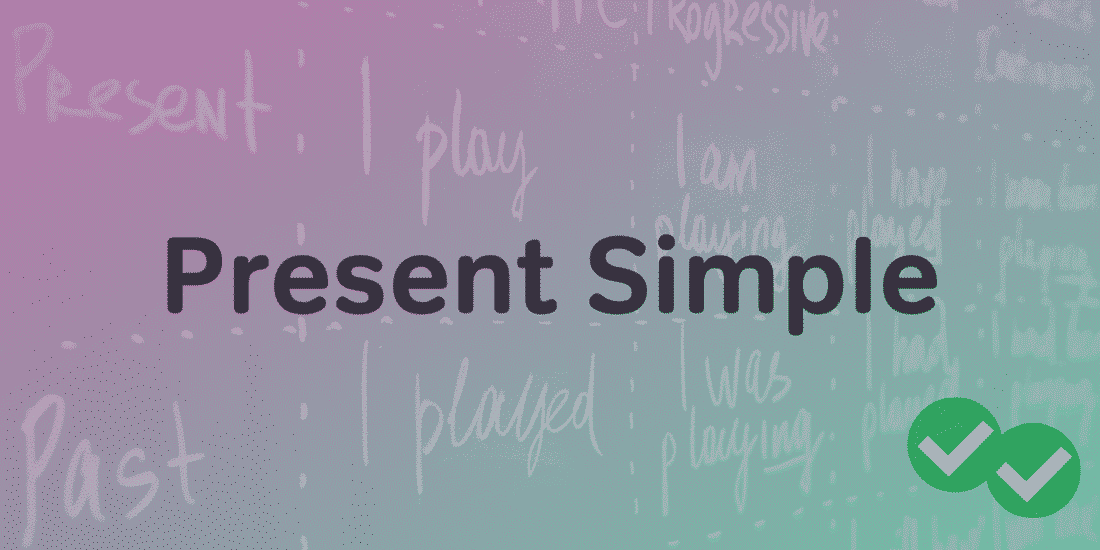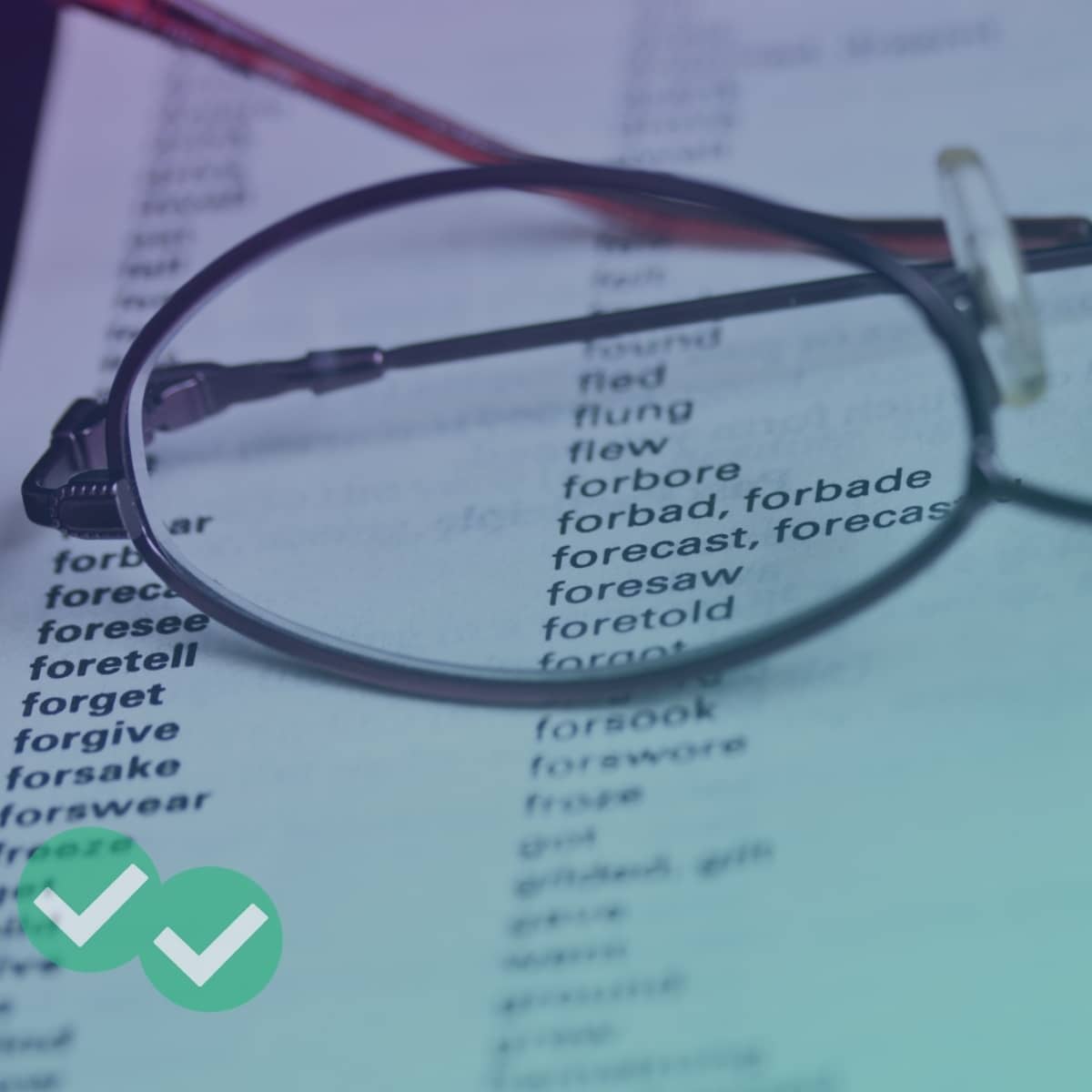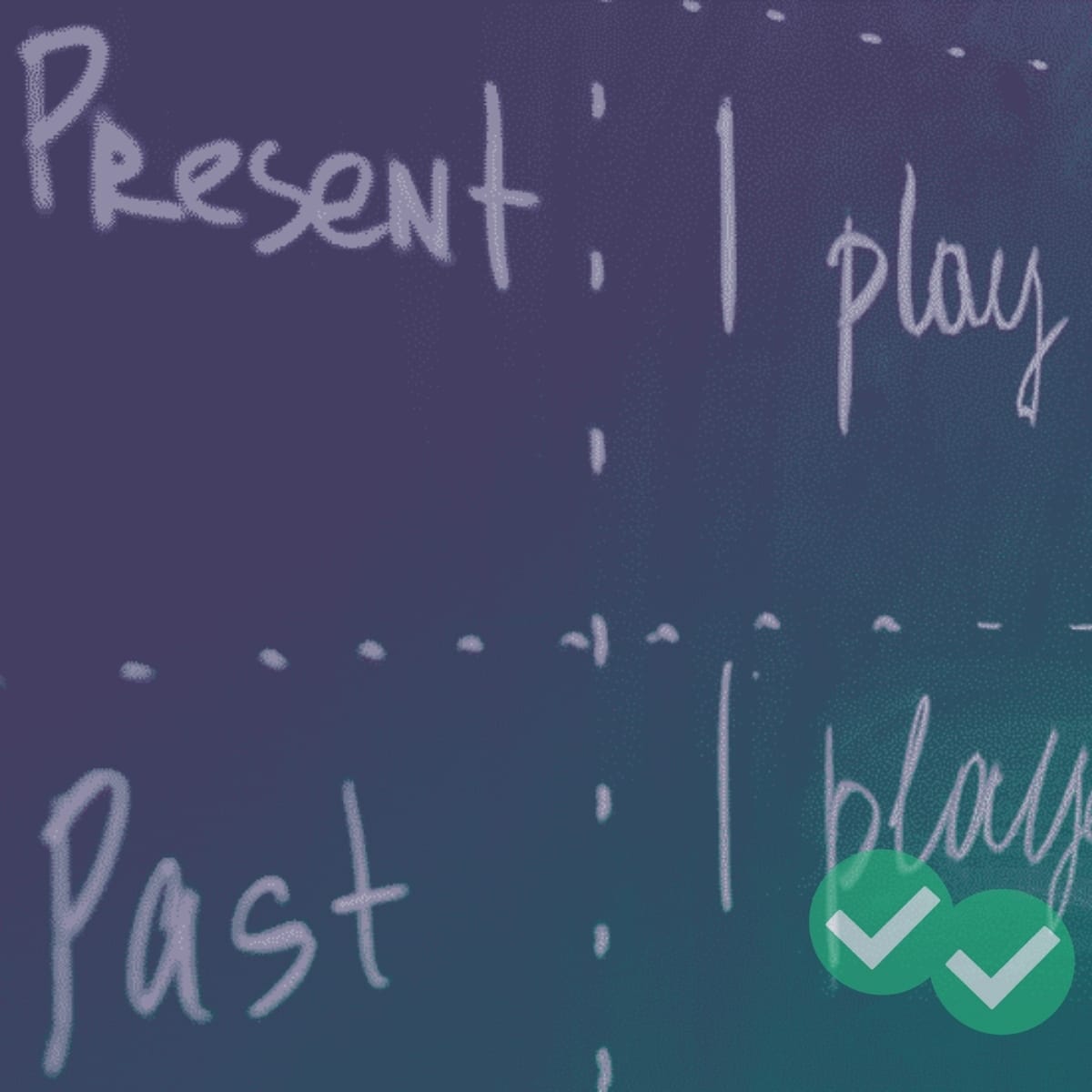
In this article, we’ll break down the present simple tense, along with examples in every form. We’ve included several tables for you to see all the main rules at a glance.
If you need a refresher on what present simple means? See our verb tenses post for a full breakdown of every verb tense with explanations and examples.
Forming the Present Simple Tense (with Tables)
Quick Reference Table: The Present Simple Tense in All forms
KEY
V → Root Verb
Vs/Ves → Present Simple form for most verbs
| Form | Most Verbs | “To be” |
| + | V/Vs/Ves
I watch the news every day. He watches the news every day. |
Am/Is/Are
I am convinced. He is smart. They are fast. |
| – | Don’t/Doesn’t + V
I don’t watch the news every day. He doesn’t watch the news every day. |
Am not/Is not/Are not
I am not convinced. He is not smart. They are not fast. |
| ? | Do/Does + subject + V
Do you watch the news every day? Does he watch the news every day? |
Am/Is/Are + Subject
Am I ready? Is she here? Are you there? |
Form present simple tense sentences by using the actual root of the word or by adding -s or -es to the third-person singular form.
**Tables use the verb ‘call’ as an example**
| Singular | Subject Pronoun | Verb |
| First-Person | I | call |
| Second-Person | You | call |
| Third-Person | He/She/It | calls |
| Plural | Subject Pronoun | Verb |
| First-Person | We | call |
| Second-Person | You | call |
| Third-Person | They | call |
There are several verbs where you will add -es instead of just -s to the end. Typically, these verbs end in ch, sh, o, th, ss, z, or gh.
Examples:
- He soothes wounds with his calm voice.
- She coaches the basketball team.
- Joey whizzes past other runners when he’s on the track.
- She washes the dishes every night.
- He presses the button so we can enter the building.
- The president vetoes every bill that comes to his desk.
Making It Negative
To make a present simple verb negative, use this formula: Do/Does + not + Root Form of Verb. You can also use the contraction of Do not or Does not (Don’t or doesn’t) instead.
Examples
- He doesn’t call anymore.
- You don’t need me anymore.
- They don’t want us around.
- Jenny doesn’t go to dance on Tuesdays.
Asking a Question
To ask a question in the present simple, use the formula: Do/Does + subject + Root form of Verb.
Examples:
- Do you call every day?
- Does he want us to stay?
- Does John need anything?
- Do we go with her?
The Verb ‘To Be’ in Present Simple Form
‘To be’ is an irregular verb and has its own form for the present simple tense.
| Singular | Subject Pronoun | To be |
| First-Person | I | am |
| Second-Person | You | are |
| Third-Person | He/She/It | is |
| Plural | Subject Pronoun | Verb |
| First-Person | We | are |
| Second-Person | You | are |
| Third-Person | They | are |
In present simple, as well as other verb tenses, you will consistently see ‘to be’ used in a contracted form as it is the most used verb in the English language.
| Singular | Contracted Form |
| First-Person | I’m |
| Second-Person | You’re |
| Third-Person | He’s / She’s / It’s |
| Plural | Contracted Form |
| First-Person | We’re |
| Second-Person | You’re |
| Third-Person | They’re |
The rules for using ‘to be’ in negative and question form remain the same (scroll up to the first table in this article). Be aware that negative contractions are also typically used with is not and are not (isn’t / aren’t).
Contracted Present Simple Examples:
- I’m not here.
- He isn’t smart.
- They aren’t going.
- Are you there?
- Is she okay?
When To Apply the Present Simple Tense
Use #1: When describing actions that are repeated or occur on a regular (habitual) basis.
Examples:
- He runs all the time.
- The boxer crushes his competition.
- Johnny plays in his sandbox every afternoon.
- Roberta travels during her summer vacation.
**Note: We generally use the present continuous tense for actions currently in progress.**
Use #2: When showing a statement or fact.
It doesn’t matter if the statement is actually true (people tend to make generalizations), but this is said as something believed to be true in the past, now, and in the future.
Examples:
- Water boils at 100°C.
- I don’t like hummus.
- He believes in astrology.
- Does Gary know that Jupiter is a planet?
**Note: Many statements presented as scientific facts are presented in the present simple tense.**
Use #3: When talking about a scheduled event.
This is commonly used when talking about transportation but can work for other events happening in the near future.
Examples:
- The bus leaves in thirty minutes.
- What time does the plane land?
- This train doesn’t go to New York.
- The ferry arrives at 6.
Use #4: When talking about something happening now.
Though you’ll generally use the present continuous tense when speaking about things that are in progress, there are verbs that are non-continuous or mixed use. In that situation, use the present simple tense.
Examples:
- I am cold.
- He isn’t here at the moment.
- Do you have your wallet?
- Joey needs help!
With a better understanding of the present simple tense, you’ll be able to conjugate quickly and communicate effectively.



Leave a Reply